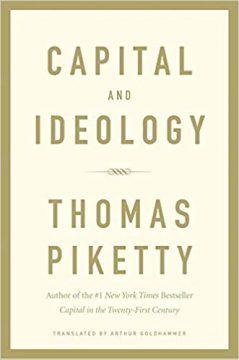Crawford Kilian in The Tyee:
 Thomas Piketty’s new book Capital and Ideology won’t be available in English until next March. At 1,150 pages, it will likely be more bought than read. But some of its ideas are already causing a stir, and one insight in particular could explain how the Canadian election will go.
Thomas Piketty’s new book Capital and Ideology won’t be available in English until next March. At 1,150 pages, it will likely be more bought than read. But some of its ideas are already causing a stir, and one insight in particular could explain how the Canadian election will go.
In a 180-page report published in March 2018, Piketty documented a remarkable shift in the political “cleavages” of Britain, France, and the U.S. Those cleavages certainly apply to Canada and other nations as well.
“In the 1950s-1960s,” Piketty writes, “the vote for ‘left-wing’ (socialist-labour-democratic) parties was associated with lower education and lower income voters. This corresponds to what one might label a ‘class-based’ party system: lower class voters from the different dimensions (lower education voters, lower income voters, etc.) tend to vote for the same party or coalition, while upper and middle class voters from the different dimensions tend to vote for the other party or coalition.”
Having won the Second World War, the U.S. and its allies designed an economic system that would reward workers with job stability and relatively high income. This was not out of the goodness of their hearts; the late British historian Tony Judt argued that Western governments had seen workers turn communist after the First World War, while the middle classes turned fascist. They forestalled a repeat by imposing various forms of social democracy on themselves: health care, respect for unions, greater access to education, high tax rates on the wealthy.
More here.
